What's the meaning of the Reiki »
Reiki
This page is about the meaning, origin and characteristic of the symbol, emblem, seal, sign, logo or flag: Reiki.
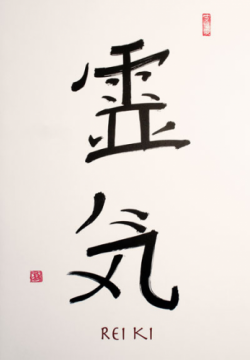
Reiki (pronounced Ray-key) is a Japanese name consisting of 2 words Rei and Ki meaning spiritually guided life energy (commonly known as Universal Life Energy), an energy which animates us all and is found all around us.
Reiki is a form of spiritual healing using "universal life energy" channelled through the practitioner to the recipient.
Reiki helps to harmonize body, mind and spirit for yourself or anyone you want to help.
Reiki treatment
You relax, fully clothed, on a couch or seated while the healer holds his hands on or above you. A treatment can last an hour or longer depending on the treatment required. In the western world many practitioners use the standard hand positions and commonly a full treatment is given covering all the important organs of the body.
There is no pressure on the body making it ideal for treating all ages and conditions, sometimes hands are even held away from the body. The energy flows wherever it is required (spiritually guided) and can normally be felt as a warm sensation or tingling in the body. Receiving Reiki is a very relaxing and soothing experience!
Reiki is an effective healing method
Reiki can be used for many ailments like reducing stress, relieving pain, headaches, stomach upsets, back problems, asthma - respiratory problems, PMT, menstrual problems, sinus, anxiety and many more. You can find treatment suggestions for specific problems under the button "How to use Reiki". (Please observe that Reiki should never be used instead of medical treatment, it should be used as a compliment and a way to become and remain healthy.)
There is no belief system attached to Reiki so anyone can receive a Reiki treatment or a Reiki attunement. As in any healing the first step towards a healthier life is a desire to be healed.
Reiki - a powerful and gentle healer
•Promotes natural self-healing
•Balances the energies in the body
•Balances the organs and glands
•Strengthens the immune system
•Treats symptoms and causes of illness
•Relieves pain
•Clears toxins
•Adapts to the natural needs of the receiver
•Enhances personal awareness
•Relaxes and reduces stress
•Promotes creativity
•Releases blocked and suppressed feelings
•Aids meditation and positive thinking
•Heals holistically
Reiki is easy to learn
Anyone can "learn" Reiki. The word learn is not quite right as most of us cannot just read about Reiki and then do it. The ability to use Reiki is normally given via an attunement or initiation. There are 3 levels of Reiki: Reiki 1 and 2 and the Master level. Once attuned Reiki is easy to use and your ability to use Reiki will never leave you!
Reiki history in change
The Reiki history as such is not changing but the information we have about Reiki and it's founder Dr Mikao Usui is constantly moving forward. Thanks to the work of Reiki Masters like Frank Arjava Petter, William L. Rand and many others we today get a more complete and factual information about Reiki. The facts and new information about Reiki in Japan is also helping the understanding of Reiki, it's history and methods.
"Reiki" with many origins
Hands on healing has been around for many centuries and has been known in many cultures. When you read about Reiki in books or on the Internet you will find several different theories about where Reiki came from: the stars, Lemuria, Atlantis, Egypt, India, Tibet etc. What we do know for a fact is that Reiki was "rediscovered" in Japan by Dr Mikao Usui during the beginning of the 20th century. For us westerners there are 3 persons that play a vital role in the history of Reiki: Dr Mikao Usui, Dr Hayashi, and Mrs Hawayo Takata.
Reiki history in the western world
A couple of years ago we only had Mrs Takata's version of the Reiki story. This version is still widely taught although there seems to be many points in her story that cannot be verified. When Mrs Takata brought Reiki to the western world after Word War II I feel that it might have been possible that she had to modify and westernize the Reiki history to better suit the times. I will not relate Mrs Takata's version here but you can find many sites under "Resources" above with her version.
Reiki in Japan
It was for many years believed that the practice of Reiki had died out in Japan but now new information about Reiki in Japan is coming to light. The Japanese Reiki system is slightly different from the Reiki that is used in the west. Written and oral information is translated from Japanese as it becomes available, including Dr Usui's manual. There are now a few books available covering these new findings.
Dr Usui, Dr Hyashi, Mrs Takata
As mentioned above these 3 persons play a very vital role in the spreading of Reiki in the western world. You can read the history about Dr Usui, Dr Hayashi and Mrs Takata by clicking the respective links.
Reiki as a preventive and curative medicine
Eastern medical philosophy has always emphasized the superiority of maintaining good health over curing illness. Reiki is a preventive medicine par excellence. But it is even more: When practising Reiki on yourself or others, you experience both its preventive and its curative functions at the same time. If you have a disease, Reiki will cure it, if not, Reiki will promote your health and longevity. This preventive cum curative quality of Reiki makes it a unique healing system.
It is only when certain parts of our bodies fail to function naturally that sickness occurs. The causes may be from bacteria and viruses, organic (toxins) or psychosomatic.
•Bacteria and viruses are always present in our bodies, but they are kept in check (sometimes even exploited to do useful work for us) as long as our bodies function naturally.
•Toxins are continually clogging our organs, but as long as we function naturally, these toxins will be neutralized by the chemicals produced by our body.
•Our brain is continually stressed, but again, if nature runs its course we will be adequately relieved after sleep and rest.
The Eastern concept of health is also wider than that of the West. To be healthy is not just to be free from disease. A person cannot be called healthy if he/she is often restless, irritable or extremely forgetful, cannot concentrate or sleep soundly, and has no zest for work or play.
How does Reiki promote health
First, it frees us from disease; it prevents as well as cures illness. Then it helps us to grow emotionally, mentally and spiritually, giving us the wonderful benefits of health in its wider sense. The preventive and curative qualities of Reiki can be reduced to two simple principles: the cleansing of meridians and balancing of the chakras to achieve a harmonious energy flow.
How does Reiki prevent or cure contagious diseases?
When disease-causing micro-organisms attack certain parts of the body, reserve energy is channelled to meet these attacks. But if the meridians are blocked, then the flow of reserve energy is hindered, and illness results. When using Reiki you cleanse the meridians, harmonizing energy levels and promote a smooth flow of reserve energy to the areas under attack, thus restoring the balance. Practising Reiki increases our reserves of energy, thus preventing any possible future outbreak of illness.
Reiki treatment for mind, body and spirit
This section will cover the Reiki hand positions in general and how to use them for specific ailments. You will also find information about 3 important elements affected by Reiki healing: The main Chakras, The Aura and The Meridians.
Fixed set of hand positions contra intuitive positions
Traditionally many Reiki practitioners give the whole body treatment covering all the hand positions. This method gives a very good overall healing effect and can be recommended if in doubt about the cause of the problem to be treated. Since the Reiki energy is spiritually guided it will in the end go where it is needed. Many practitioners have found that by being guided by their intuition they can reach even better results. Personally I have always found that this is the case. By combining knowledge from different Eastern medical systems I have created a simple guide to which Reiki positions, in my opinion, that can be used to reach the best effect for different ailments. Under "Reiki hand positions" in the menu to your right you can find pictures and a description on how the system is built (if you know the traditional hand positions you don't have to learn anything new!). Under the button "Reiki treatments" you will find the hand positions I recommend for over 60 different ailments.
http://www.reiki.nu/index.html
- 1,664 Views
Graphical characteristics:
Asymmetric, Open shape, Monochrome, Contains both straight and curved lines, Has crossing lines.
Category: Consciousness.
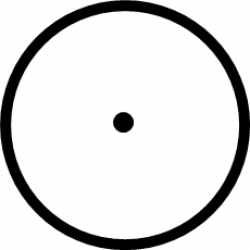
More symbols in Consciousness:
The Circum Point / Circum Punctum symbolizes Consciousness The circled dot, circumpunct, or circle with a point at its centre is an ancient symbol. It can represent: (http://en.wikipedia.org/wik… read more »
Citation
Use the citation below to add this symbol to your bibliography:
Style:MLAChicagoAPA
"Reiki." Symbols.com. STANDS4 LLC, 2025. Web. 18 Feb. 2025. <https://www.symbols.com/symbol/reiki>.


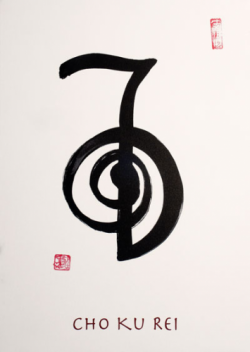
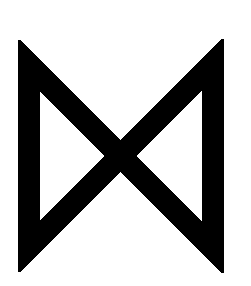

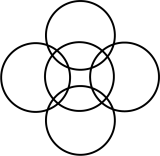
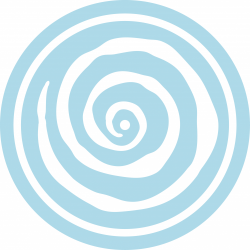
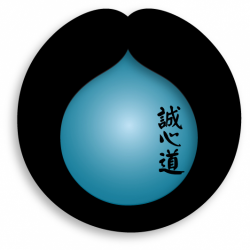




Have a discussion about Reiki with the community:
Report Comment
We're doing our best to make sure our content is useful, accurate and safe.
If by any chance you spot an inappropriate comment while navigating through our website please use this form to let us know, and we'll take care of it shortly.
Attachment
You need to be logged in to favorite.
Log In